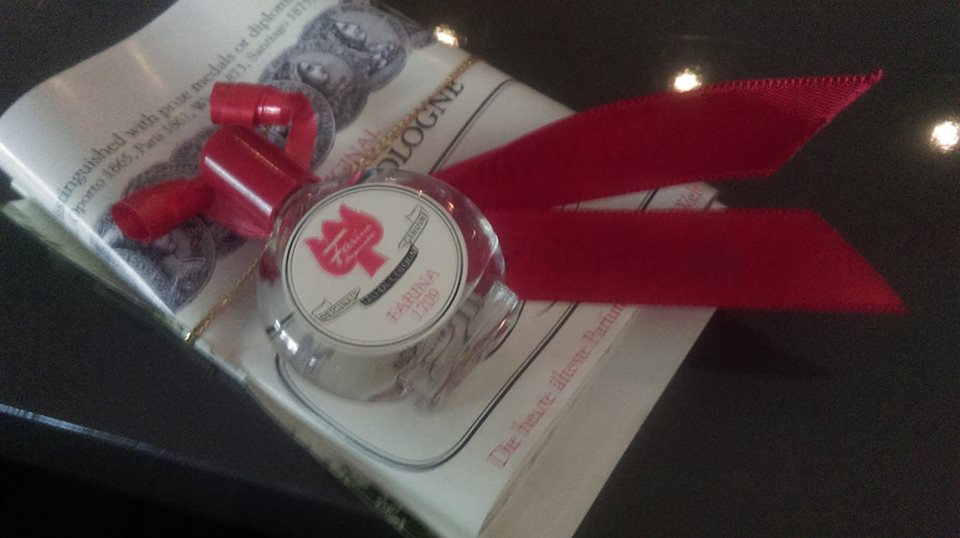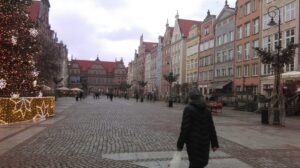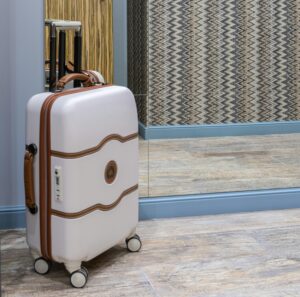
Are you looking for low cost or free things to do in Cologne? Cologne has a reputation for being one of the friendliest and most relaxed cities in Germany, and I have to agree with that. Here are 10 free or low cost things to do in Cologne on a short visit.
I have visited the city five times this year, and have always felt welcome and at ease. It is also the city in Germany where I have most been able to put my German into practice, and I have to say, the Cologners are very tolerant of bad German…
If you’re only here for a day or two however, and on a budget, I have put together a list of 10 things you can see or do for free or at very low cost to fill in a day or two. Enjoy Cologne!
1. Farina Museum, Obenmarspforten 21 – 5 Euros
This is the original site at which the original Eau de Cologne was manufactured. They make it clear that you should not believe anyone who says it was the 4711 site, which is close to the Cathedral.

The Farina museum has an excellent tour, which at a mere 5 euros, is excellent value,tells the history of the Farina family and how they started the perfume business. You must book for the tour, and depending on the time of year, and other factors, you may have to book a few days in advance. I got onto the tour on the same day in February. You can book online, so you can do it before you arrive in Cologne. You can’t go independently, you must do the tour, but it really is an excellent tour, and the day I went a least, you get a little bottle of the original recipe Eau de Cologne at the end it. Visit the website for current entry times and prices.

2. Römisch-Germanisches Museum – 3 euros.
This museum is right next to the Cathedral and has exhibits relating to the Roman and Germanic history of Cologne. At the time of writing this the general exhibition was closed for renovation, and has been for some time. You can still do guided tours at specific times and for specific exhibitions at a cost of 3 euros. Bookings are not needed and they take groups of up to 25.
Visit their website for current opening times and entry prices.
3. National Socialism Documentation Museum – Free
Another Free thing to do in Cologne. This is a free museum, and displays the newspaper articles, photographs, film footage and statistics from the Nazi era in Cologne, which sounds pretty grim, but don’t be put off; it really is a good museum and well worth the visit.

Don’t expect a smile or much information when you walk in the door. It is a very sombre, stark and creepy place, and I had a feeling that I somehow shouldn’t be there, just saw what I needed to see and got out! It is housed in the former Gestapo Headquarters of Cologne,which somehow escaped the WW2 bombing that destroyed most of the central part of Cologne.
Visit their website for current opening times.
4. Hohenzollern Bridge with Love Locks
Spanning the Rhein River is the Hohenzollern Bridge, which is a rail and foot bridge leading into and out of the main train station of Cologne. If you enter Cologne by train you will quite possibly cross this bridge, unless you’re coming from the east. More than 1200 trains cross this bridge per day. Built in the first decade of the 20th century, it was named after Prussian rulers of Cologne at the time, the House of Hohenzollern. The bridge was destroyed during WW2 and was reconstructed as a rail and foot bridge, where it had been originally also a road bridge.
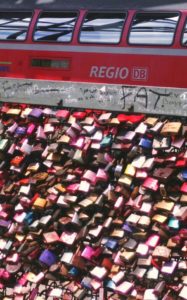
One of the most intriguing aspects of the bridge – depending on your point of view – is the forest of ‘love locks’ attached to the bridge. They are padlocks with the initials of lovers written or engraved on them, and attached to the wire on the pedestrian part of the bridge. There are so many, that I don’t know where anyone could fit another one. You do have to wonder though, how many of these lovers are still an item…
5. Köllner Dom (Cathedral Church of St Peter) – Free things to do in Cologne
The Cathedral Church of St Peter is the focal point of the city. If you come by train you will see it as you enter the main train station, and its spires are visible from many places in the inner part of Cologne. It was built between the 1200s and the 1400s and is famous not only for being one of the great Gothic Cathedrals of Europe, but also for having the highest spire of a cathedral in Europe. The spire, however, didn’t become the tallest until the 19th century. (Ulm Minister does in fact have a higher spire, apparently built on purpose to rival Cologne. Ulm Minister, however, is not a cathedral).

Unlike many English cathedrals these days, Cologne Cathedral is free to enter, although you will usually see one of the scarlet bedecked priests at the entrance with a donation box hanging around his neck! It is also okay to sit in the pews for as long as you like. Unlike many of the Cathedrals in Eastern Europe and Austria, they don’t cordon the pews off outside service times.
The interior of the cathedral is magnificent, in particular the stained glass windows an several screens. There is so much to see in here, you could make several visits and still not see it all. There are rules for entering the cathedral: No flash photography and no selfie-sticks being among them.
If you’re in Cologne at Christmas time and planning on attending midnight mass at the Cathedral, make sure you get there early. I got there about two hours early last Christmas Eve, and it was already standing room only!
Visit the Cathedral website for entry times and mass times.
6. Old Town Hall
One of the features of the Old City (Altstadt) is the Rathaus (Town Hall). Its facade is a world renowned architectural masterpiece built between 1569 and 1573. It also has an impressive renaissance built tower. The Roman governed Cologne from this location. They discovered this when they were doing renovations and found remains of the Roman period. the Francs also ruled it from the same place. Visit the Cologne Old Town website for details,
7. Buskers and Free Concerts (Free things to do in Cologne)
There are always buskers around various parts of the city playing all styles of music, from classical to jazz to ethnic.

Also keep an eye out for free concerts. In my last week in Cologne, I attended rounds two and three of the German Conductors Awards in the Cologne Philharmonic Auditorium. They were free to attend, and a great chance to see how orchestral rehearsals are run, They were also a good escape from the rain!
8. Shopping (Window Shopping – Free things to do in Cologne)
Cologne is full of window shopping opportunities. The main drags for shopping are Hohe Straße , which leads south from near the Cathedral, and Schildegasse, which leads off Hohe Straße to the right. Both have the usual High Street type shops.
If you venture around some of the back streets, or heading towards Neustadt and the Belgian quarter you will find some more boutique type shops, which are always nice to look at, even if you’re not planning on buying anything.
9. Cafes – Coffee from 2-5 euros

Cologne is full of cafes and bars! Take you’re pick if you are just wandering around the centre at a loose end. There are some nice ones around Neustadt and elsewhere. As with boutique shops, the back streets are always a good bet.
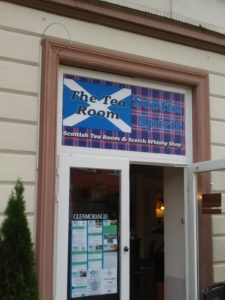
You might even find some unexpected treasures, such as The Scottish Tea Rooms, near Friesenplatz. If you’re a homesick Scot, you can find a Scottish delicatessen (haggis?), tartan gear and scotch whiskey tastings! Not somewhere I’d sit an wile away the hours though..
10. Stolpersteine
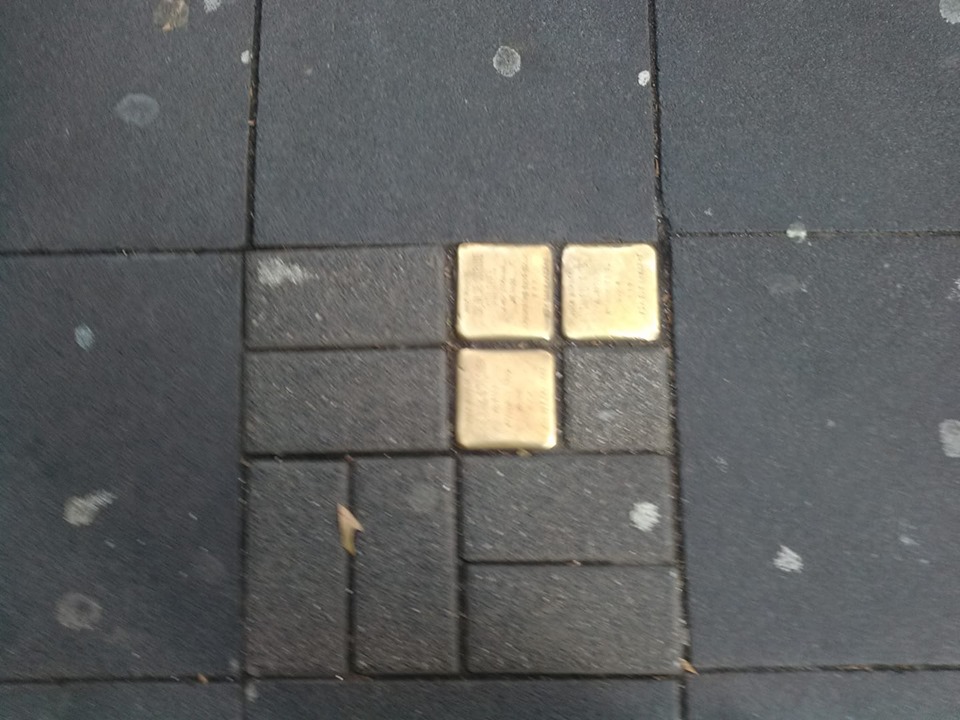
I include The Stolpersteine under Cologne, as they actually originated in Cologne, and are most prolific in Cologne, although you can find them in most big cities and some smaller towns in Germany. They are also in other parts of Europe both western and eastern.
Translated as ‘Stumbling Stones’ they are small plaques set in the footpaths marking the places where the Nazis took people from to send them to concentration camps. They have been placed in there as a mark of remembrance. The plaques have the names of of the people the dates they disappeared. You will see them all over Cologne as you walk around the city.
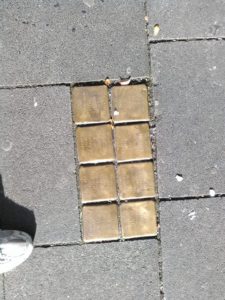
Although I have seen them in Eastern Europe before coming to Cologne, I found the sheer number of them here very confronting and at first was in two minds about how I felt about them, at first wondering if they weren’t just a bit accusatory towards Germans living now, who had nothing to do with it.
However, after a number of visits here, I have given it some deeper thought, and now see them not only as a commemoration of the victims of the Nazi regime, but also as a symbol of healing, not only for the descendants of the victims, but also for the descendants of the perpetrators and of those who resisted them.
